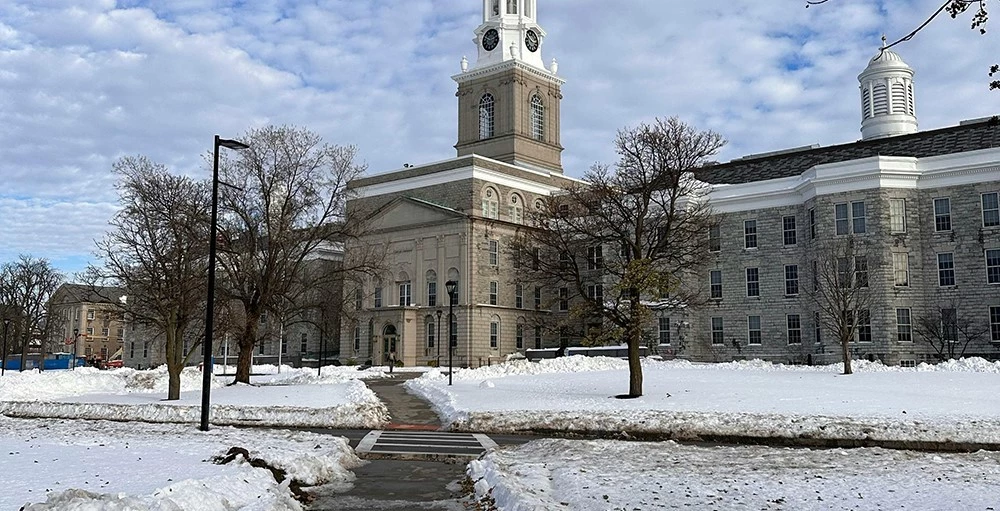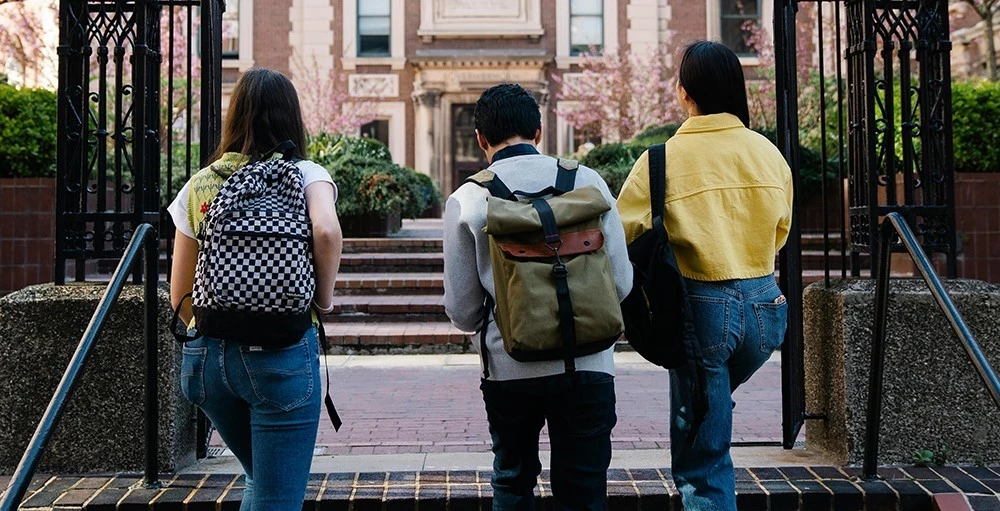Although more and more college students manage their own money, statistics show that they are having a hard time being responsible with this real-life skill.
Case in point: a 2018 EverFi survey1 revealed:
- 41 percent never looked at their checking account balance in the past year
- 60 percent did not create a budget
- 38 percent do not stop spending when financial resources are low
- 15 percent live paycheck to paycheck
Despite these poor financial choices, nearly half worry about their debt. Unfortunately, when these students graduate, they do not leave their troubles behind them.
Parents Supporting Their Millennial Children
A new study by Merrill Lynch and Age Wave2 shows that a majority of millennials (70 percent) are leaning on their parents to help them after graduation.
Parents end up paying for little things like groceries and cell phones but also end up making mortgage payments (13 percent) and student loan payments (10 percent).
Even with this help, a survey by CreditLoan3 found that 87 percent of Millennials have been broke at least once in the past year.
Over half (58 percent), readily admit that without parental support, they could not live their current lifestyle.
Although this may, in part, be due to wanting to live a grander lifestyle as they start out after college, it also has to do with current economic times.
- Loan debt has increased $6,200 per person since 19984
- Cost of middle-class life has increased 30 percent5
- Cumulative inflation doubled since 1990, thus cutting buying power in half6
Although millennials want to be financially independent, many factors, both in and out of their control, are working against them.
Skyrocketing Student Loan Debt
A large portion of the debt carried by college grads is student loan debt.
According to the U.S. Federal Reserve7, 69 percent of those who graduated in 2018 took out loans with an average debt of nearly $30,000. Nationally, 45 million Americans now owe $1.56 trillion in student loan debt, higher than credit card debt by $521 billion.
Part of student loan debt, however, falls on the parents of millennials who took out Parent PLUS Loans offered by the government and Parent Loans through private lenders.
Currently, 3.6 million parents owe $88.9 billion.8
Parents are completely responsible for these loans, which often derail retirement. A 2019 Bankrate report9 shows that about 50 percent of parents have dipped into retirement funds to pay off student loans, as well as help their millennials with other financial needs.
What Does This Mean For Students?
Once graduated, student loan debt has to be repaid.
When added to other consumer debt as well as the cost of living, many millennials find themselves in trouble.
The statistics show an unhealthy financial trend:
- 11.5 percent of student loan borrowers are 90 days or more past due10
- One million student loan borrowers default each year
- In the next 4 years, experts believe that 40 percent will default on their student loans11
Unfortunately, defaulting on loans will cause millennials even more financial trouble, perhaps setting them back years.
For instance, credit scores will likely drop 60 points to an average of 550 [TC12] – a ‘very poor’ rating.12
This will affect such things as interest loans on a home, being disqualified from a job, increased car insurance rates, and more.
Additionally, defaulting on student loans, especially if they are government loans can lead to garnished wages, tax offsets, suspended professional licenses and even revoked driver’s licenses.
Since federal loans are never dismissed, defaulting on the loan does not mean that the balance is forgiven.
In fact, with interest and collection fees, the balance will increase by as much as 10 percent.13
How Student Financial Wellness Programs Help
That is why it is so important for students to understand how to be financially healthy long before graduation.
A 2016 report from Sallie Mae14 says that 38 percent of students want to learn more about how to save money and 33 percent want more information on how to pay for college beyond student loans.
The EverFi study15 asked students what would help them most in terms of understanding real-life finances and paying off their college debts:
- 66 percent - Making a plan
- 60 percent - Understanding loan repayment options
- 48 percent - Strategies for limiting loans
- 42 percent - Someone on campus to talk to
- 37 percent - More information before taking a student loan
Students not only need help but are asking for help when it comes to financial wellness.
Institutions of higher education can provide success to their student body by making financial wellness education a priority.
With the iGrad Financial Wellness Program, educational institutions can help their students:
- Learn how to build credit appropriately while in college
- Understand FICO scores
- Create and follow a budget
- Build savings even while in college
- Understand student loans and their consequences before applying for the loan
- Discover alternatives to student loans
By providing a financial wellness program, educational institutions can help their students nearing graduation make good decisions and get them on the path to fiscal responsibility.
To see the iGrad Financial Wellness Platform in action, watch our demo video here.
1 - http://info.everfi.com/rs/410-YCZ-984/images/EVERFI-Next-Generation-FInancial-Capability-Report.pdf
2 - https://www.ml.com/the-financial-journey-of-modern-parenting.html
3 - https://www.creditloan.com/blog/broke-in-america/
4 - https://www.pewsocialtrends.org/essay/millennial-life-how-young-adulthood-today-compares-with-prior-generations/
5 - http://economichardship.org/
6 - https://inflationdata.com/Inflation/Inflation/DecadeInflation.asp
7 - https://www.federalreserve.gov/publications/2018-economic-well-being-of-us-households-in-2017-student-loans.htm
8 - https://studentaid.ed.gov/sa/about/data-center/student/portfolio
9 - https://www.bankrate.com/personal-finance/financial-independence-survey-april-2019/
10 - https://www.federalreserve.gov/publications/2017-economic-well-being-of-us-households-in-2016-education-debt-loans.htm
11 - https://www.brookings.edu/research/the-looming-student-loan-default-crisis-is-worse-than-we-thought/
12 - https://www.cnbc.com/2018/08/13/twenty-two-percent-of-student-loan-borrowers-fall-into-default.html>
13 - https://www.urban.org/research/publication/underwater-student-debt>
14 - https://news.salliemae.com/sites/salliemae.newshq.businesswire.com/files/doc_library/file/SallieMae_MajoringinMoney_2016.pdf
15 - http://info.everfi.com/rs/410-YCZ-984/images/EVERFI-Next-Generation-FInancial-Capability-Report.pdf








